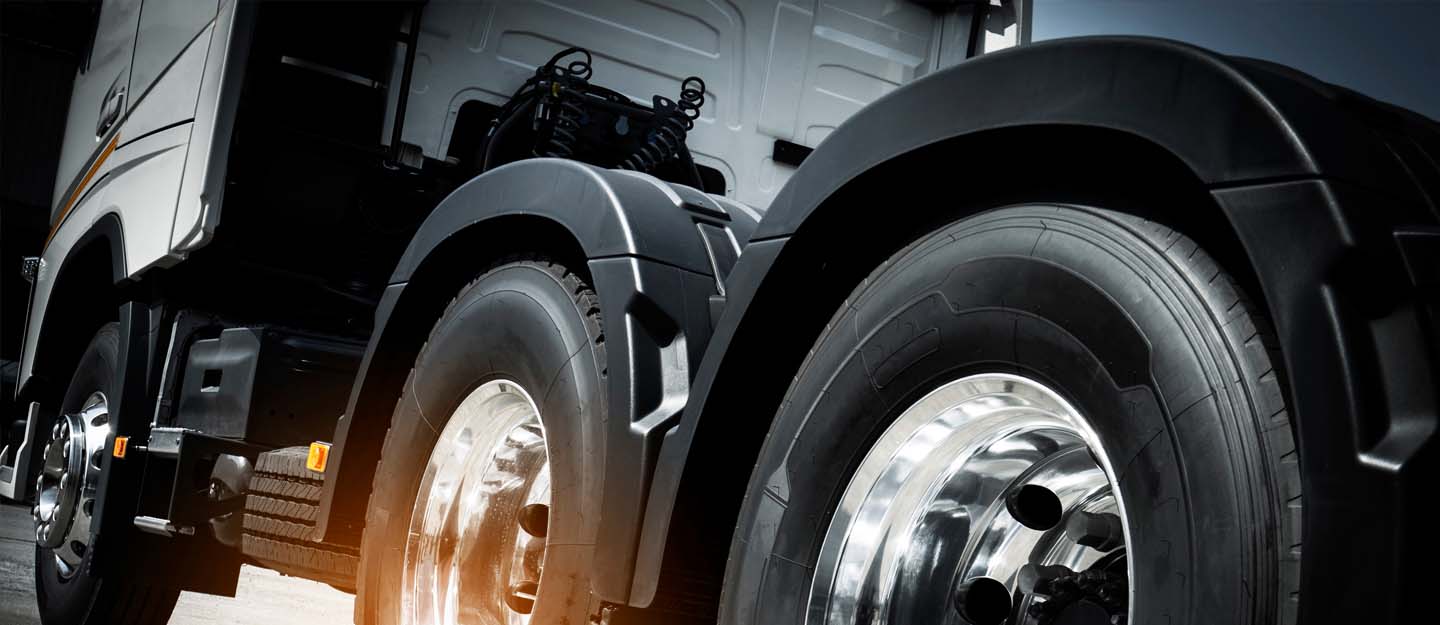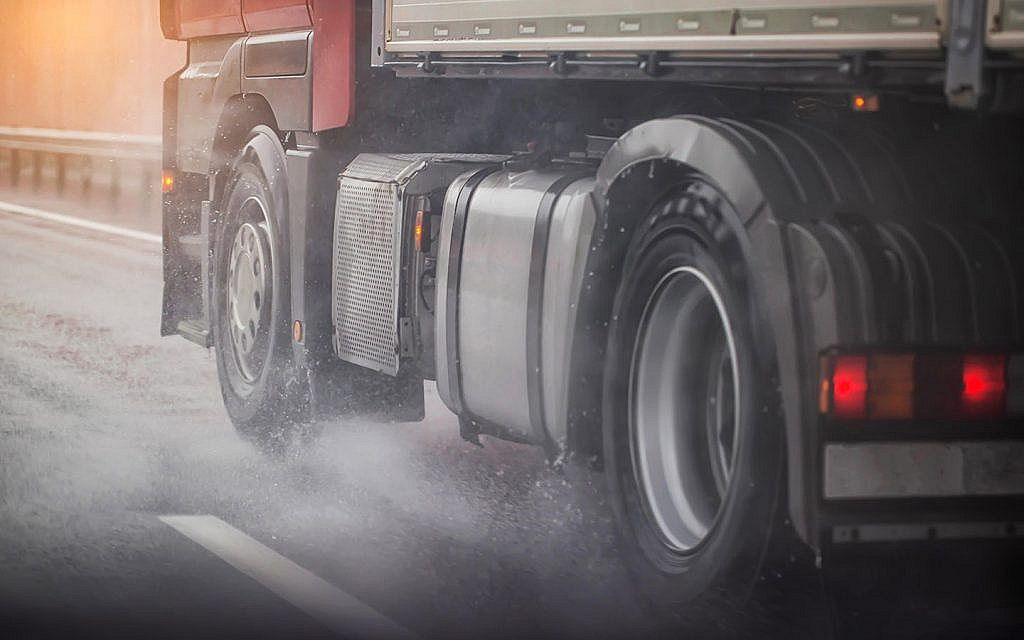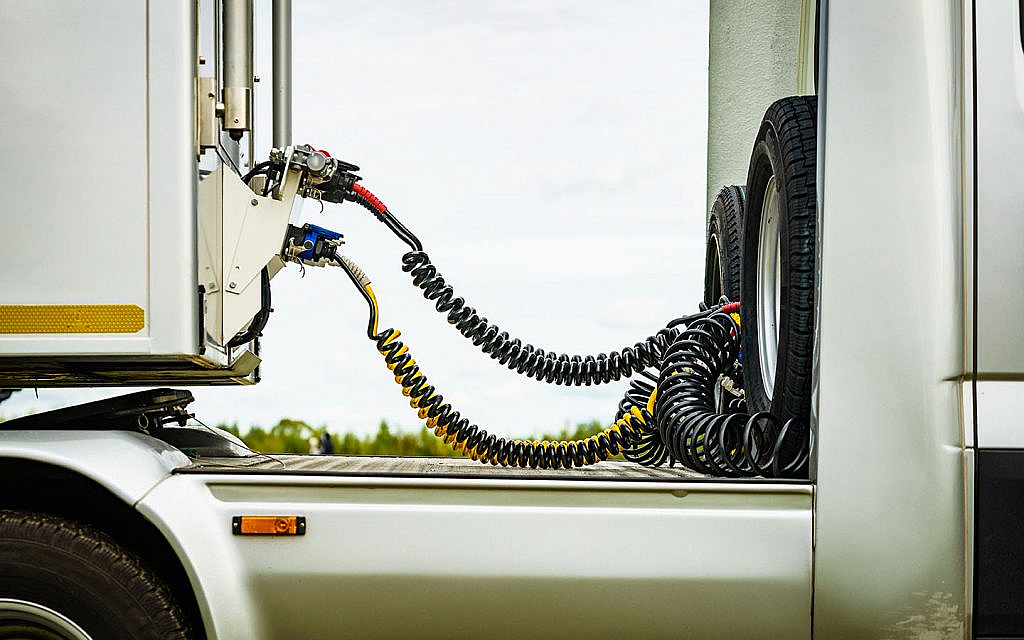
- About Air Brakes
- Air Brakes Components
- How Air Brake Works
- Air Vs Hydraulic Brakes
- FAQs
When tonnes of weight are moved via heavy vehicles, brakes are among the most crucial components that ensure road safety. While conventional hydraulic braking systems are effective for regular cars, many diesel-powered heavy vehicles rely on air brakes. The system uses compressed air to bring massive moving loads to a complete halt safely.
Let’s explore how the air brakes in heavy vehicles work, their key components and functionalities.
What are Air Brakes in Heavy Vehicles?
Air brakes are a type of braking system that uses compressed air to apply pressure on the brake pads and stop the vehicle. Also known as the compressed-air brake system, it is installed in large heavy vehicles, including trucks, buses, trailers and semi-trailers. Air brakes have advantages over hydraulic brakes, such as more stopping power and better safety against a leak.
What are the Main Components of Air Brakes?

Let’s develop a deeper understanding of the air braking system by learning more about its different components.
Air Compressor
The air compressor is responsible for creating and supplying air pressurise to the system. It continually compresses atmospheric air and maintains the required 100–120 psi pressure in the system.
Air Reservoirs
These are storage tanks for compressed air. There are typically two types: primary and secondary reservoirs. They store air for use when needed and help maintain brake pressure.
Brake Chambers
These are components that convert air pressure into mechanical force. They contain diaphragms that expand when air pressure is applied to create friction and slow down the vehicle.
Brake Lines and Hoses
These are the conduits that carry pressurised air from the reservoirs to the brake chambers. When conducting regular brake maintenance, check lines and hoses to ensure reliable brake performance.
Quick Release Valve
This valve is used to release brake pressure rapidly, allowing the brakes to disengage when the driver releases the brake pedal. It helps in reducing stopping distances.
Spring Brake Actuator
A crucial component that automatically engages the brakes if there’s a loss of air pressure. It serves as a safety feature to prevent runaway vehicles.
Brake Pedal Linkage
The linkage connects the brake pedal to the air valves and controls the application and release of the brakes.
Brake Control Valve
This valve regulates the amount of air pressure sent to the brake chambers, allowing the driver to modulate braking force. It is one of the most important components of the air brake system in trucks.
Governor
The governor controls the air compressor’s operation. This maintains the appropriate air pressure within the system.
Brake Drums and Shoes (or Brake Discs and Pads)
Air brakes in heavy vehicles either use drum brakes or disc brakes. Drum brakes encompass brake drums and shoes, while disc brakes use brake rotors and pads. These components create friction when pressed together, resulting in braking action.
A driver must be aware of all these components and their functioning to safely drive around heavy vehicles.
How Air Brakes Work

When the driver applies the brakes, the brake valves open and compressed air flows to the brake chambers. The compressed air pushes the pistons in brake chambers, which moves the brake actuators and applies the brakes.
Similarly, when the brakes are released, the brake valves close and decrease the air pressure in the brake chambers. The springs in the brake chambers then return the brake actuators to the released position. However, for proper functioning, check air brake components regularly and add them to your truck inspection checklist.
Air Brakes Vs Hydraulic Brakes: How They are Different
Air brakes and hydraulic brakes are two different braking systems used in various types of vehicles. They have distinct characteristics and applications. Here’s a comparison of the air brake system vs the hydraulic brake system.
Functioning
Air brakes in commercial vehicles use compressed air to actuate the brake components. When the brake pedal is pressed, air pressure is applied to the brake chambers. This applies the force to the brake pads or shows, slowing down the vehicle.
In hydraulic brakes, a fluid transmits pressure from the brake pedal to the brake callipers or wheel cylinders. As a result, braking force is applied and the vehicle slows down.
Application
Air brakes can generate a substantial amount of braking force, making them suitable for heavy-duty applications. They can handle the braking requirements of large and heavy vehicles effectively.
On the other hand, hydraulic brakes are designed to work efficiently in lighter vehicles. However, their braking force may not be sufficient for extremely heavy loads.
Maintenance
Air brakes generally require less maintenance than hydraulic brakes. They are less prone to brake fade due to heat, and the air pressure system is relatively robust. That said, in case of malfunction or failure, visit these bus repair centres in Dubai or the ones in your respective emirate.
Since hydraulic fluid can overheat, hydraulic brakes are more susceptible to brake fade under heavy usage. Brake fluid must be changed periodically. This is why, hydraulic brakes often require frequent monitoring for leaks and maintenance.
Emergency Braking

Air brakes in commercial vehicles have a built-in safety feature known as a spring brake actuator. It automatically applies the brakes in case of a loss of air pressure. This feature is essential for enhanced safety, especially for heavy-duty transportation.
However, hydraulic brakes do not have an equivalent emergency braking feature. Loss of hydraulic fluid can result in a complete loss of braking capability.
FAQs
Which type of brake is used in heavy vehicles?
Heavy vehicles have air brakes instead of conventionally used hydraulic brakes in regular cars.
Why do trucks and buses use air brakes?
Trucks and buses usually transport heavy loads, which is why they require air brakes. This braking system produces a substantial amount of braking force, suitable for heavy-duty applications.
How do air brakes work?
An air brake system works with the principles of friction. It creates the required pressure on the brake pistons with the help of compressed air. When the pressure is applied on the brake pad or shoe, the vehicle safely comes to a halt. The working of air brakes in heavy vehicles is simple physics.
That wraps our overview of the functioning and importance of air brakes in heavy vehicles. Meanwhile, here are some more tips and tricks to control heavy-duty transport. Make sure you’re aware of the RTA laws for heavy traffic before you hit the road.
Whether you’re looking for a new truck or other types of heavy vehicles for sale in the UAE, there are plenty of options available in the market.
For similar updates regarding the truck air brake system anatomy, keep following our auto blog.